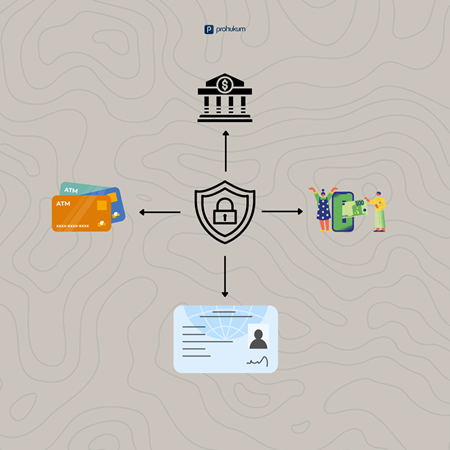Recently, Bank Indonesia (BI) has come under public scrutiny following its announcement of the upcoming launch of the Payment ID by Bank Indonesia system, scheduled for August 17, 2025.

This innovation, which forms part of the Indonesian Payment System Blueprint (BSPI) 2025–2030, is designed to strengthen the integration of the national payment system. On the one hand, it offers several advantages—particularly in terms of efficiency, transparency, and accountability. On the other hand, it also raises legitimate concerns, including risks related to privacy, data security, and consumer protection.
In this article, we will thoroughly examine the pros and cons of BI’s Payment ID system from legal, security, financial, and ethical perspectives. Additionally, we include a review of relevant regulations and the roles of related institutions to provide a more comprehensive understanding.

What is Payment ID?
The Payment ID by Bank Indonesia functions as a unique digital identity based on the National Identification Number (NIK). Specifically, financial institutions and service providers will use it to identify user transactions across various platforms. Moreover, this ID consolidates a user’s financial information from multiple sources, including bank accounts, e-wallets, digital loans, and government social assistance programs.
In other words, each individual will hold a single Payment ID that reflects their entire financial footprint. Consequently, banks, payment service providers (PSPs), lending institutions, and government agencies will actively use this system to verify identities, maintain records, and analyze financial data. Ultimately, this integration could simplify financial processes and improve data accuracy across sectors.
Illustrative Example:
A citizen named Andi holds accounts at two banks, one e-wallet, and an active online loan. With the Payment ID, financial authorities and related institutions can consistently access and connect all of Andi’s financial information and transaction history.
Advantages of the Payment ID
- Increased Efficiency and Accuracy
With Payment ID, data verification between institutions becomes faster and more error-free. This facilitates credit processes, social assistance distribution, and reduces risks of duplicate transactions.
- Transparency and Accountability
Since financial institutions can trace every transaction through a unique ID, they can strengthen oversight, reporting, and auditing processes
- Improved Credit Access
Financial institutions can assess a person’s creditworthiness more objectively through integrated data linked to the Payment ID.
- Prevention of Data and Public Fund Misuse
With one verified ID, financial institutions and government agencies can actively reduce the risk of identity fraud, money laundering, and duplicate aid recipients.
Drawbacks and Risks of Payment ID
- Privacy Violation Risks
Given that the Payment ID by Bank Indonesia is based on the NIK and consolidates all user financial data, it creates a high risk that unauthorized parties could misuse personal information.
If that happens, and malicious actors leak or exploit the data, the consequences could be severe.
- Data Centralization and Breach Risk
This system creates a single point of sensitive data centralization. Without a strong cybersecurity infrastructure, the Payment ID could become a prime target for cyberattacks.
- Lack of Specific Technical Regulations
As of the writing of this article, there is no official regulation from Bank Indonesia or the Financial Services Authority (OJK) detailing the technical implementation of the Payment ID. This creates legal uncertainty for service providers and users.
- Ethical and Social Concerns
The public does not yet fully understand the implications of having their data integrated. Without proper public education, this system may lead to distrust or even rejection.
Legal Review and Relevant Regulations
Although there are no specific technical regulations yet for the Payment ID, some relevant laws and institutions include:
- Law No. 27 of 2022 on Personal Data Protection (PDP Law):
This law regulates how personal data is collected, stored, and processed. It includes data related to Payment IDs. Data processing must be based on user consent and must uphold the rights of the data subject. - Government Regulation No. 71 of 2019 on Electronic Systems and Transactions (PP PSTE):
This regulation outlines the responsibilities of electronic system providers. They must ensure the confidentiality, integrity, and availability of user data. - Law No. 8 of 1999 on Consumer Protection:
Consumers are entitled to clear and accurate information. They must also be protected from the misuse of their personal data. - Bank Indonesia (BI):
As the initiator and regulator of the national payment system, BI has the authority to issue regulations and oversee the implementation of the Payment ID. This includes rules for payment systems and service providers (PSPs). - Financial Services Authority (OJK):
OJK is responsible for ensuring that financial service providers follow rules on transparency, data security, and consumer protection.
Conclusion: An Innovation that Requires Cautious Execution
The Payment ID by Bank Indonesia marks a significant milestone in the modernization of the national payment system. From a technical standpoint, the system holds strong potential to enhance efficiency, improve transparency, and promote financial inclusion. Nevertheless, serious concerns remain—particularly regarding potential privacy violations and the current lack of regulatory preparedness. These, without prompt action, may undermine public trust and system credibility.
Therefore, to ensure that the Payment ID becomes a solution rather than a new problem, several key elements are required:
- Comprehensive technical regulations from BI and OJK,
- Thorough public education to raise awareness and trust,
- Strengthened cybersecurity infrastructure, and
- Clear consumer complaint and protection mechanisms.
Otherwise, without adequate preparation, the Payment ID could become a double-edged sword—offering greater efficiency while simultaneously triggering a trust crisis.
Is Indonesia truly ready to manage its citizens’ financial data in an integrated manner? Or are we opening the door to even greater risks?
